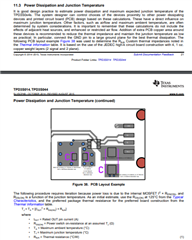Hi, I plan to use TPD3S014DBVR to limit USB 5V VBUS power to 0.5 A out to an external USB connector per USB 2.0 spec using a 5V rail as the input to the device. How do I estimate power typical and max power dissipated for the device? Any guidance is appreciated. Thanks.
-
Ask a related question
What is a related question?A related question is a question created from another question. When the related question is created, it will be automatically linked to the original question.


